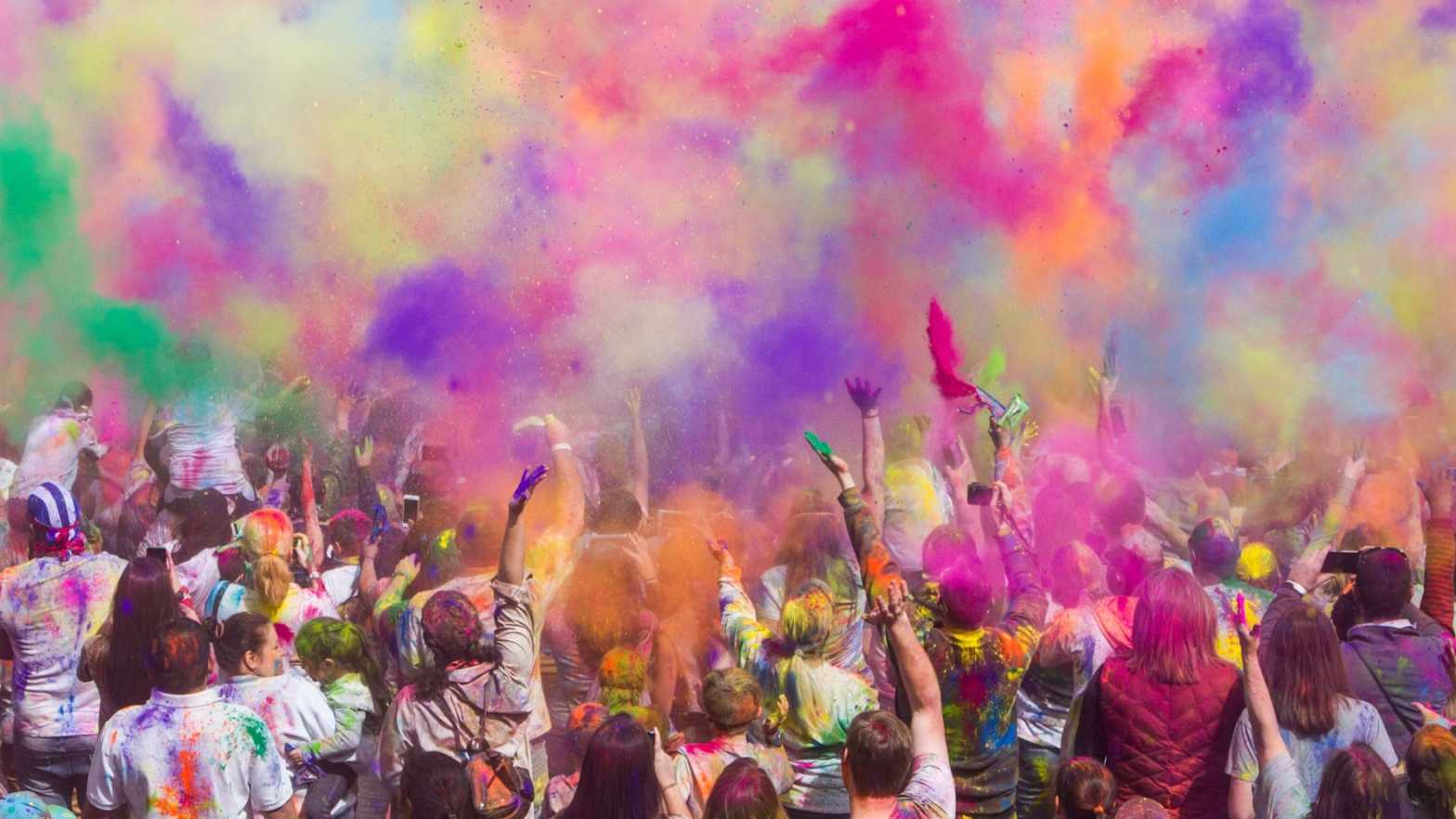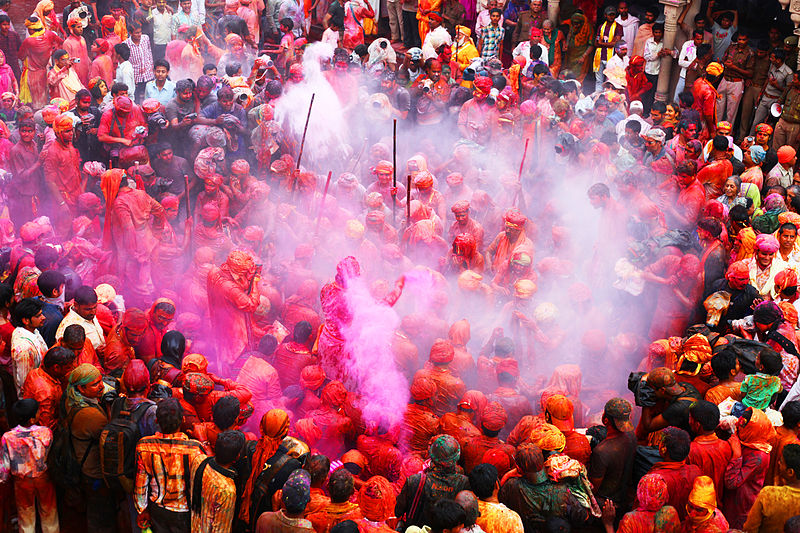


Do you know what makes Holi so special in Bharat? It’s a festival where everyone throws colourful powders into the air and at each other. Holi is a happy time when people laugh, play, and dance together in the streets.
In this post, we will tell you everything about # Bharat ki Holi, which comes every year in March. On Holi, we forget our problems and enjoy life’s simple pleasures. Let’s find out why everyone loves this day so much.
Table of Contents
ToggleHoli is a traditional festival with a long history in Bharat, having been celebrated for centuries. It is observed to welcome the arrival of spring and is commonly referred to as the “Festival of Colors.” The origins of this festival can be traced back to Hindu mythology, specifically the tale of Holika and Prahlad.
The tale recounts the existence of a demon king, Hiranyakashipu, who demanded worship from all but his son Prahlad remained steadfast in his devotion to Lord Vishnu.
Despite numerous attempts by Hiranyakashipu to harm him, Prahlad always emerged unscathed. In a last desperate effort, Hiranyakashipu’s sister Holika, who was impervious to fire, deceived Prahlad into sitting with her on a pyre.
However, divine intervention saved Prahlad while Holika met her demise in the flames. The occasion is marked by Holika Dahan, which involves the lighting of a bonfire on the evening before Holi.
Additionally, the festival is a celebration of the eternal love between Radha and Krishna, during which social norms are relaxed and people unite to engage in playful activities, laughter, and revel in the vibrant colours symbolising joy, love, and the victory of good over evil.
Holi, the festival of colours, is celebrated with great pomp and show across the diverse landscapes of Bharat, each region adding its own local flavour to the festivities.
In the Braj region of Uttar Pradesh, the celebration is a grand affair, steeped in the mythology of Radha and Krishna. The streets echo with songs and the air is perfumed with the scent of flowers used in the celebrations. The playful throwing of colours here is said to be inspired by the love play of Radha and Krishna.
“Braj ki Holi” refers to the Holi celebrations in the Braj region of India, particularly in places like Mathura, Vrindavan, and nearby areas. The Braj region, associated with the childhood of Lord Krishna, holds special significance during the festival of Holi.
Holi celebrations in Braj are known for their unique customs, traditions, and festivities. The celebrations often include vibrant colors, music, dance, and reenactments of various episodes from the life of Lord Krishna. It’s a joyful and colorful spectacle that attracts visitors from all over the world.

Braj ki Holi! captures the essence of the celebration – the special connection to Lord Krishna, the vibrant traditions, and the joyful atmosphere.
Here are some additional points you might find interesting:
Playful Rivalry: Braj ki Holi is known for its playful fights between men and women. In Barsana, women playfully chase men with sticks, reenacting a legend where Radha playfully scolds Krishna.
Flowers and Colors: Unlike many Holi celebrations that use dry powdered colors, Braj ki Holi often incorporates flowers as well. This is seen as a more symbolic and gentle way to play with colors.
Extended Celebrations: Holi in Braj is not just a one-day event. Celebrations can stretch over weeks, with different towns having their own unique traditions.
Delhi and Uttar Pradesh see a more traditional celebration with Holika Dahan, where large bonfires are lit on the eve of Holi to symbolise the burning of evil. The next day, the air is filled with a spectrum of colours as people smear each other with gulal and splash water, enjoying sweets like gujiya and sipping on the intoxicating thandai.
Barsana, a town located in the Braj region of Uttar Pradesh, is famous for its distinctive celebration of Holi called Lathmar Holi. This tradition is steeped in the playful lore of Radha and Krishna.
Lathmar Holi in Barsana is a vibrant and spirited event that takes place a few days before the main Holi festival. The women of Barsana, representing Radha and her companions, arm themselves with sticks and playfully beat the men from neighbouring Nandgaon, who shield themselves and try to throw colours on the women. This is another style of Bharat ki Holi.
This lively exchange commemorates the playful teasing between Radha and Krishna and the gopis.
The festivities begin with Laddoo Holi at the Radha Rani Temple in Barsana, where the air is filled with both colours and laddoos (sweet balls) as they are playfully thrown among the participants.
This event recalls the times when Krishna and his friends would visit Barsana to play Holi with Radha and the gopis.
The festivities in Barsana span approximately one week and draw in tourists from various locations who come to observe and take part in this distinctive cultural event.
The entire town comes alive with music, dance, and the laughter of thousands, creating an unforgettable atmosphere of joy and camaraderie.
Moving to Punjab, the festival takes on a different hue with Hola Mohalla. It’s not just about colors but also showcasing martial skills. Processions, mock battles, and displays of bravery are the highlights, reflecting the valor of the Sikh community. Holi in Punjab is a vibrant and joyous occasion, characterized by colorful celebrations, traditional rituals, and the spirit of togetherness.
In Gujarat, the festival is known as Dhuleti and is famous for its spirited folk dances and the iconic event where people form human pyramids to break pots filled with buttermilk, hung high above the ground. It’s a test of teamwork and agility, accompanied by the rhythm of dhol and the taste of festive delicacies.
Maharashtra celebrates with a community spirit that is hard to miss. Rang Panchami, as it is known locally, involves not just playing with colours but also a display of cultural unity through music and dance. The streets become stages for impromptu performances, and everyone is welcome to join the dance.
In the southern state of Kerala, the festival is more subdued but no less significant. Known as Manjal Kuli, it is celebrated in the Konkani temple communities, where people gently apply turmeric water on each other, symbolising good health and prosperity.
Each of these regional celebrations brings out the essence of Holi — a festival that transcends the mere play of colours to become a symbol of unity, joy, and the triumph of good over evil. It’s a time when the entire nation comes together to celebrate life, love, and renewal.
As we come to the end of our colourful journey, we see that Holi is much more than just a day of playing with colours. It’s a time when the whole of Bharat comes together to share joy, laughter, and love. From the playful fights in Barsana to the unity in the streets of Delhi, every color thrown in the air carries a story of friendship and happiness. Holi teaches us that no matter where we are in Bharat, we can all share in the fun and make wonderful memories together. So, let’s keep the spirit of Holi alive all year round, spreading cheer and goodwill every day.

